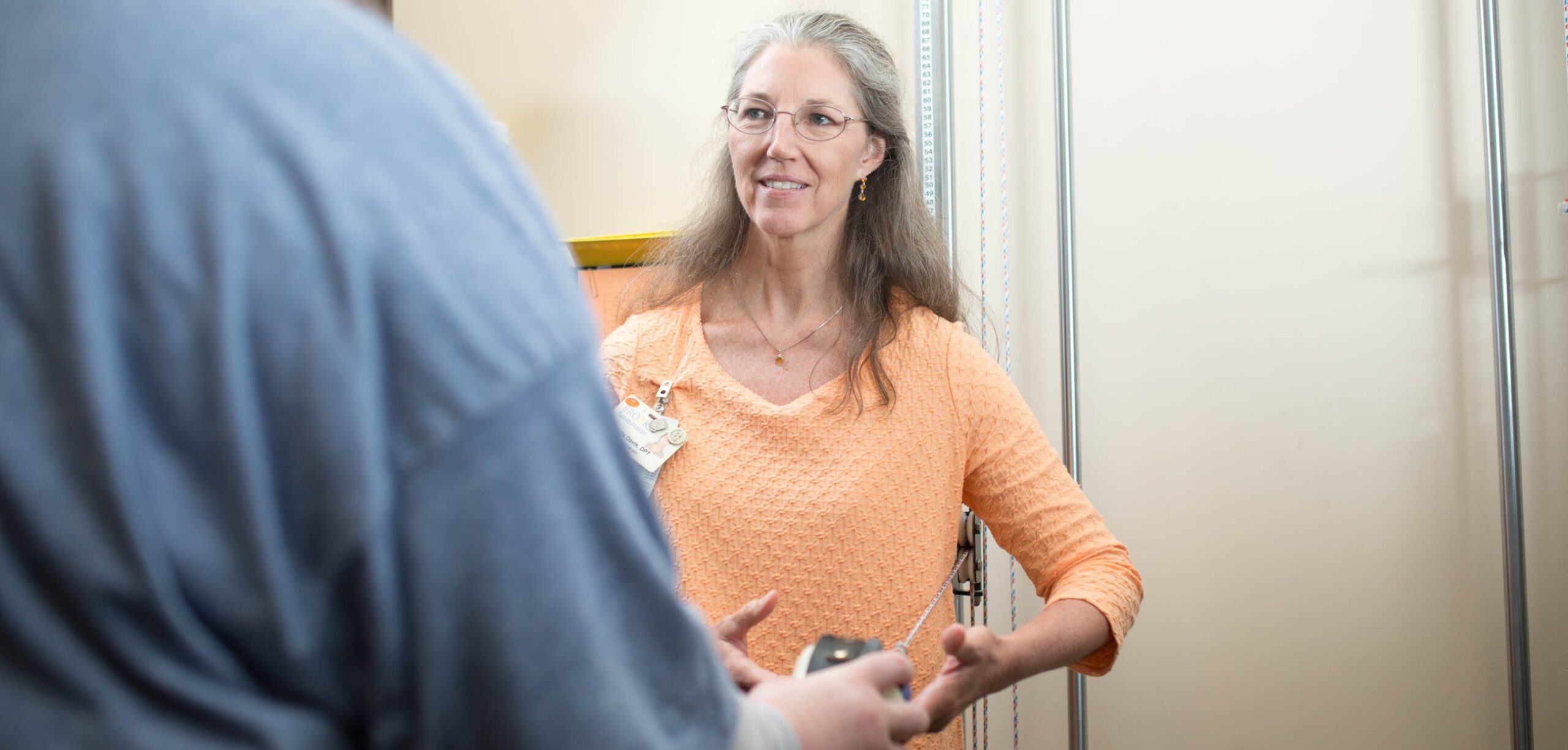Complex Regional Pain Syndrome: Symptoms, Stages and Treatments

Back to physical health resource hub
Complex Regional Pain Syndrome (CRPS) is a rare disorder that can affect people of all ages.
In the United States, a disorder is classified as rare when it affects less than 200,000 people. Currently there are over 7,000 rare diseases in the U.S. According to the National Institutes of Health, only about 500 of these diseases have approved treatments.
Many of the symptoms for complex regional pain syndrome may not be apparent to yourself, friends or family. Patients may visit a physician who is not aware of CRPS. Other times, healthcare providers may doubt the existence of the disease.
However, CRPS is real. Research is showing that it is a complex condition involving the nervous system, immune system, inflammation and physical impairments.
Because this disease affects so much of a person’s life, counseling and psychology is often an additional recommended resource for coping with chronic pain and effects on relationships.
In this article, some of the topics discussed are:
- The signs and symptoms of Complex Regional Pain Syndrome
- Stages vs. types of CRPS
- Who is affected by this disorder
- Diagnosis and treatment options
- What you can do if you think you have CRPS

Signs and Symptoms of CRPS
Each person may experience CRPS differently, but there are some common features. Pain is the hallmark sign/symptom to raise the flag something is different. In typical scenarios, pain from an injury is worse initially and then improves over time as the tissue heals. When CRPS is present, pain does not subside and it exists even after the tissue has healed.
Pain caused by this syndrome is often described as burning, deep or even freezing. It is felt even from a light touch, clothing or non-painful sensations like the movement of air.
Other features include:
- Changes in skin color
- Changes in temperature
- Changes in swelling
- Sweating or extra dryness of the affected region
- Limited range of motion, tremor or inability to move
- Changes in skin texture
- Changes in hair and nail growth
Stages vs. Types
In the past, healthcare providers categorized CRPS in different stages. Through years of study, however, this has not been validated.
Trends of ‘warm’ and ‘cold’ sub-types of CRPS with each type showing different symptoms has been identified. Initial studies have seen better outcomes with the ‘warm’ type but research is still in early stages.
Complex regional pain syndrome is divided into types based on the absence or presence of major nerve damage.
- Type I is identified when signs and symptoms cover an area completely like a glove on a hand or a sock on a foot.
- If there is identified nerve damage and the symptoms match the path of the nerve then it is classified as Type II.
Who is Affected by Complex Regional Pain Syndrome?
Many studies show trends with adult women being diagnosed more often than men. In a sample of 1,043 patients, 71% were female with ages ranging from 10 to 85 with an average age of 51.
Among the pediatric population, children under 18 years of age, CRPS is also more common among girls with the average age at diagnosis around 12. However, some reports have documented this syndrome present in children as young as three years old.
Complex Regional Pain Syndrome often develops after a trauma. In the latest study, 42% developed CRPS after a fracture, 21% after a blunt trauma (sprain/strain), 12% from surgery, and 7% developed with no known injury.
Diagnosing CRPS
There is not a gold-standard test for CRPS. A diagnosis is typically made based on a clinical exam, history and supporting tests that rule out other conditions.
A clinical exam involves looking at the affected area, testing for temperature, color, movement and swelling. Additional tests are used to ensure there is not another underlying condition. Early diagnosis helps to start the right treatment and expedite possible remission.
Is There a Cure?
Unfortunately, there is no cure for CRPS. However, there is hope for remission and reduction of symptoms to help resume a meaningful life. Research is going on every day to find a cure and improve our current understanding of the disease to guide us to better treatments.
Treatments for CRPS
Treatment may include medications, nerve blockers, physical or occupational therapy, psychological support and other adjunct services.
A comprehensive treatment approach is recommended to promote the best outcome. However, a percentage of patients may need more treatments that are intensive and should discuss further with their physician.
Medications
Over the years, several medications have been used to manage CRPS. Unfortunately, the ability to test any treatment for CRPS is challenging due to the rarity of the condition and limited possible participants for high quality and repeated studies. Knowing this, the Food and Drug Administration has eased some restrictions on numbers of participants in study criteria to support research efforts. However, medications continue to be a common part of the treatment plan for this condition.
Currently, the types of medication prescribed range from anti-inflammatories to opioids with many others in between. Some medications have better effects on those with early onset symptoms. However, as with any prolonged pain medication use some individuals may develop a tolerance to the effect where dose or changes to medication need to be made.
Some have found benefit with immune modulation using steroids, but there are risks with long-term use. Therefore, this is most often helpful in the early cases. Trials are still underway and needed for more data on medication combinations and outcomes. To find current trials, visit clinicaltrials.gov.
The chemical make-up of other drugs is used to block certain signals in the nerves to help with the pain. Gabapentin is an example. This medication has been used for a long time and is well known, but actually started out as a treatment for seizures. Other drugs may be used if gabapentin is ineffective, but results continue to vary.
Opioids may sound like an option because they are understood to be powerful painkillers. However, with the type of pain seen in CRPS, opioids are less effective and, in prolonged use, can actually increase pain sensitivity. Therefore, some reserve opioids for break-through pain relief.
Other more extensive medical treatment includes injecting medication to the area of the nerves, sustained infusions or implant electrical devices.
Injections
Certain injections target a bundle of nerves called the sympathetic ganglion, located close to the spine with different sites contributing to arm or leg symptoms. These nerves are a part of the Autonomic Nervous System, which are important in regulation and activation of things our body does automatically, such as managing blood flow, temperature, sweatiness and heart rate.
The sympathetic block requires a physician to inject a particular medication at just the right spot to block the signal to lessen pain and symptoms. The accuracy of hitting this target area varies from provider to provider, and the response to the procedure varies patient to patient.
The response even varies in the same patient from one block to the next. These procedures lack high quality and repeated positive outcomes. Studies are still ongoing for this type of treatment.
Neuro-Stimulation
Neuro-stimulation is another familiar intervention. This is known as spinal-cord stimulation. It involves having small electrodes positioned along the nerves to stop noxious signals going to the brain.
This treatment is commonly used when other treatments have been unsuccessful.
The patient goes through a trial and training period with different frequencies and programs. Some studies have shown this stimulation also had an effect on pro-inflammatory chemical that helped to decrease pain.
A similar process intercepts the nerve at a different location called dorsal root ganglion stimulation, introduced in 2016. Initial studies show better success in some patients then the spinal cord stimulation, but repeated studies are needed.
Other treatment options are developing and being applied to gather clinical data. However, all applications come with side effects.
Even too much Tylenol can have detrimental effects on the liver. Medications can affect the stomach, cognition, mood and more. Procedures may be complicated with infection, moving stimulation leads, added procedure pain and even spinal cord injury or systemic rejection of implant devices.
Physical Therapy
Physical therapy is a treatment that has been known to help reduce pain and external factors that are causing pain, such as exercises or footwear. This type of treatment does not garner the side effects that medication, injections and stimulations do.
Types of therapy treatments include patient education, movement therapy, graded motor imagery, range-of-motion exercises, manual therapy, muscle strengthening and functional training.

Do I have Complex Regional Pain Syndrome?
If you think this describes your condition, speak to your physician about the possibility of having CRPS. You have the right to advocate for yourself and ask questions. If your pain is more severe than expected for your injury with no improvement, start the conversation.
Make sure to:
- Ask your physician if you could have CRPS
- Get treatment for the pain
- Keep the affected area moving
How Brooks Can Help
Brooks Rehabilitation has a team of highly knowledgeable and skilled physical therapists in outpatient therapy clinics across Florida. To request an evaluation for outpatient therapy, visit our Request Care page.
Article References
Taylor S, Noor N, Uritis I, et al,. Complex Regional Pain Syndrome: A Comprehensive Review. Pain Therapy. 2021;10:875-892
Harden RN, McCabe CS, Goebel A, et al. Complex Regional Pain Syndrome: Practical Diagnostic and Treatment Guidelines, 5th edition. Pain Medicine. 2022; 23:S1-S53
Ott S, Maihofner C. Signs and Symptoms in 1043 Patients with Complex Regional Pain Syndrome. The Journal of Pain. 2018:19(6):599-61


